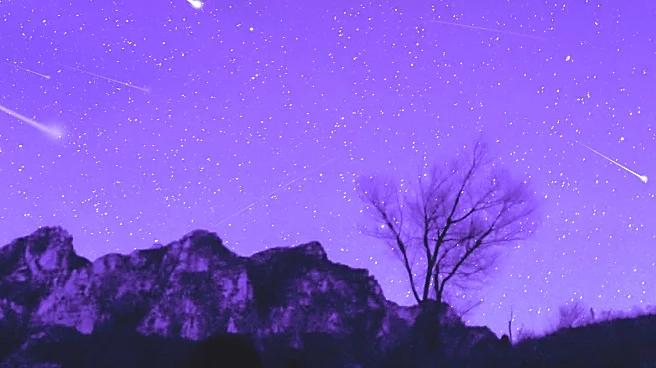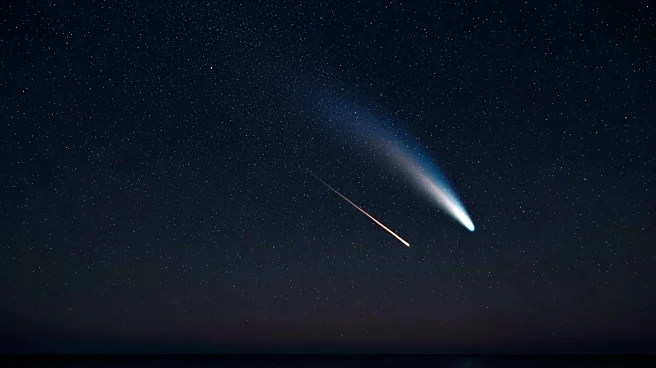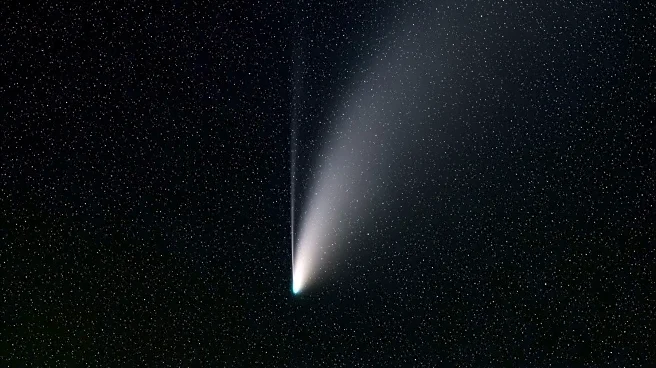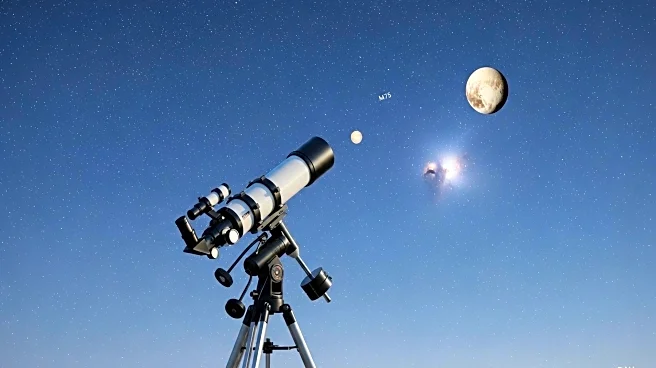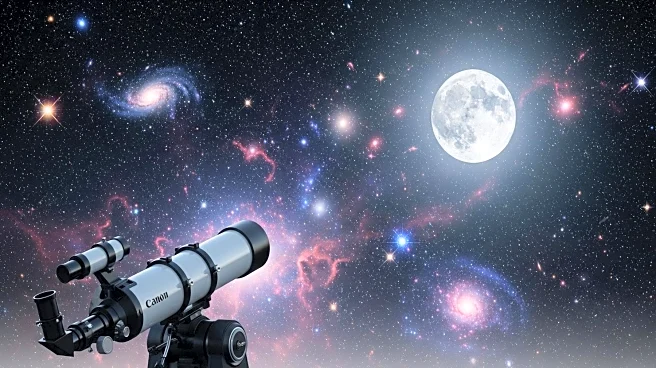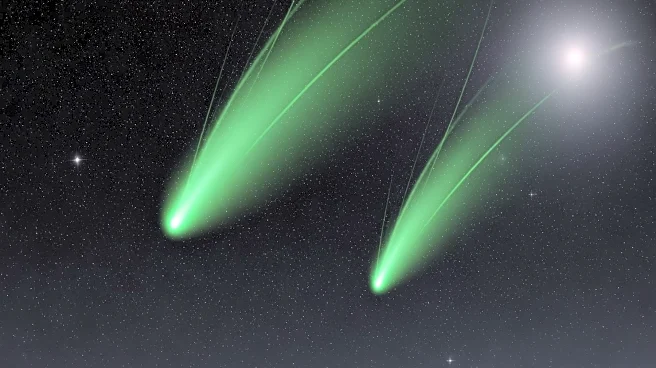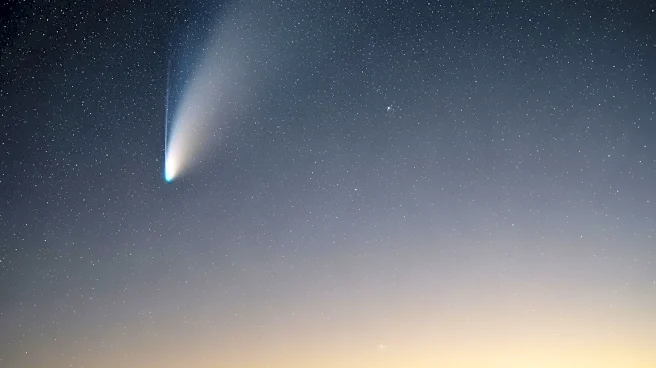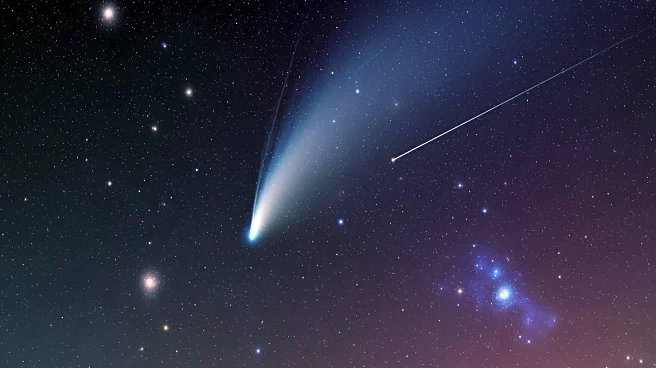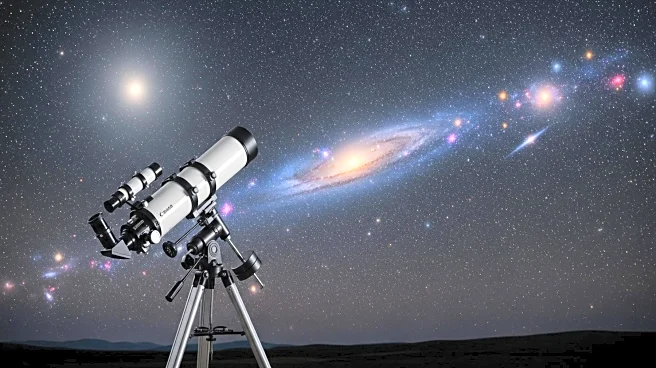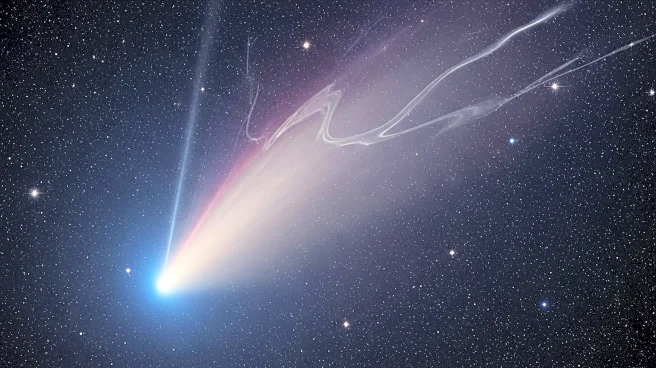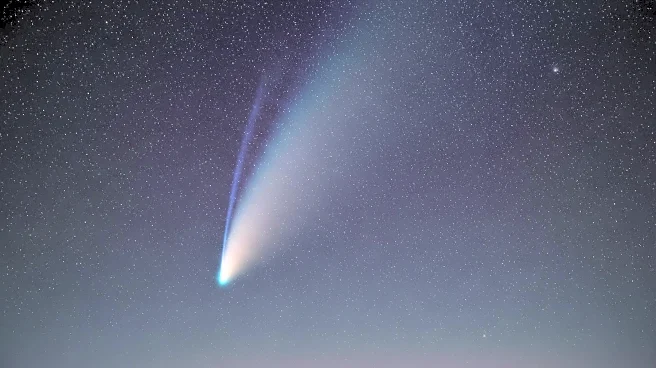What's Happening?
Astronomy Magazine provides a detailed overview of celestial events occurring from October 17 to 24, 2025. The Orionid meteor shower is set to peak on October 21, coinciding with a New Moon, offering optimal
viewing conditions. The magazine also highlights the closest approach of Comet C/2025 A6 (Lemmon) to Earth, which will be visible in the early morning sky. Additionally, Mercury and Mars will be observable near the western horizon, while a Titan transit across Saturn is anticipated. The article offers guidance for observing various deep-sky objects, including the Summer Triangle, the Pleiades, and the California Nebula, emphasizing the use of optical aids for best viewing experiences.
Why It's Important?
These celestial events provide unique opportunities for amateur astronomers and sky enthusiasts to observe and photograph rare astronomical phenomena. The Orionid meteor shower, with an expected rate of 20 meteors per hour, offers a chance to witness the remnants of Halley's Comet. The proximity of Comet Lemmon to Earth allows for detailed observation and study, contributing to our understanding of cometary behavior and composition. Observing planetary transits and conjunctions, such as those involving Mercury, Mars, and Saturn, enhances public interest in astronomy and encourages educational engagement with the sciences.
What's Next?
As the Orionid meteor shower peaks, sky watchers are encouraged to find dark locations away from city lights to maximize visibility. The comet's approach and planetary transits will continue to be monitored by astronomers, providing data for ongoing research. The magazine suggests using binoculars and telescopes to enhance viewing experiences, particularly for observing the finer details of planetary phases and cometary movements. These events may inspire further public interest and participation in astronomy clubs and educational programs.
Beyond the Headlines
The convergence of these celestial events highlights the dynamic nature of our solar system and the importance of public engagement with astronomy. Observing these phenomena can foster a deeper appreciation for the universe and stimulate interest in scientific exploration. The events also underscore the role of amateur astronomers in contributing to scientific discoveries and data collection, as their observations can complement professional research efforts.
